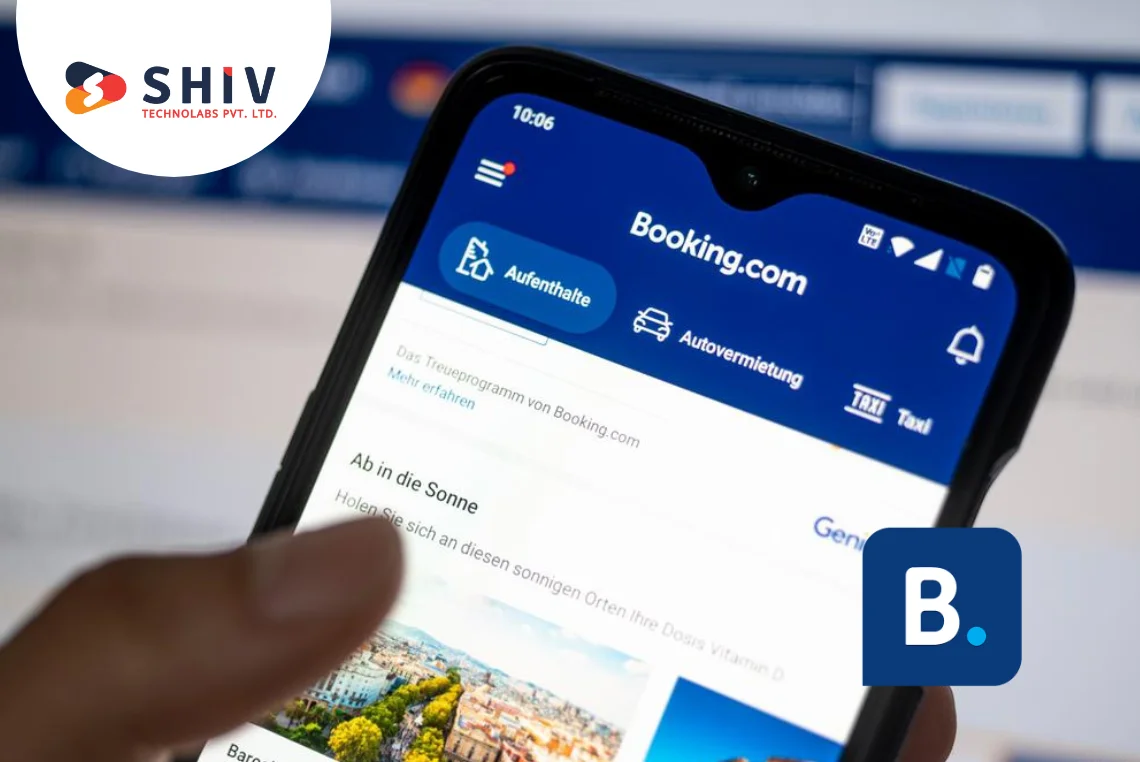Table of Contents
Logistics teams across Europe want faster deliveries and cleaner handoffs between partners. Many choose mobile app development services in Europe to build reliable tracking for cars, vans, and trucks. Real-time data cuts guesswork and supports safer, more accountable field operations across regions.
AI, GPS, and IoT now connect vehicles, drivers, and dispatch in one practical view. Sensors stream location, speed, and fuel data as trips progress on busy routes. Teams spot delays early, act on alerts, and keep customers informed without repeated calls.
Managers gain maps, trip timelines, and proof of service in one dashboard. They review idling, harsh braking, and missed stops, then correct issues the same day. Clear reports help finance and compliance teams justify budgets and meet strict regional rules.
This guide covers cost ranges, essential features, and the steps to build your app. You will see how strong architecture supports visibility, safety, and daily performance. Want a faster start with fewer surprises? Book a quick call and plan your build.
What Is a Vehicle Tracking Mobile App and How Does It Work?
A vehicle tracking mobile app shows live locations, trip history, alerts, and fleet metrics. Drivers run a phone app or connect onboard GPS units that send data at set intervals. Managers view a secure dashboard and act quickly when routes drift off plan.
In GPS tracking mobile app development, devices send coordinates, speed, and sensor data to cloud services. The backend cleans, stores, and analyzes events, then returns insights to apps and web panels. Dispatch sees moving vehicles, current status, and exceptions without manual checks.
Dashboards present maps, active trips, and alerts with simple, role-based controls. Leaders review stops, idling, and fuel patterns for each vehicle or the entire fleet. Strong access controls, audit logs, and GDPR-ready data handling protect driver information across regions.
European fleets also care about safety and service levels on every route. Real-time visibility supports proof of delivery and faster dispute resolution with partners. Need a setup aligned to your routes and rules? Our specialists can design a tailored plan.
Why European Businesses Are Investing in Custom Vehicle Tracking App
![]()
Fleet owners in Europe want fewer surprises on the road and cleaner handoffs. Delivery firms, couriers, rentals, taxi fleets, and carriers now run connected systems to keep trips on time and bills under control. Many pick custom vehicle tracking app development because off-the-shelf tools miss their routes, rules, and service terms.
The return shows up in daily numbers. Dispatch cuts idle hours, trims empty miles, and reacts faster when traffic blocks a key road. A courier hub in Berlin might reroute vans in minutes and keep drop-offs inside promised windows. That protects revenue and keeps clients from switching.
Maintenance savings stack up as well. The platform records engine hours, harsh events, and heat spikes from sensors. Teams plan service before a roadside breakdown and keep more vehicles billable. Lower repair shocks mean steadier budgets.
Clear records also help during claims and audits. You can confirm who drove, when they arrived, and how the trip went. That supports insurance talks and focused driver coaching without guesswork.
Key business wins include:
- Real-time tracking and status updates
- Geofencing and alerts
- Route and trip analytics
- Fuel and maintenance reports
- Driver performance scoring
How Much Does It Cost to Build a Vehicle Tracking Mobile App in Europe?
Planning starts with one hard question: the real cost to develop fleet management app features that work daily. Budgets shift with scope, security depth, and compliance needs. A single-region MVP costs less than a multi-country build with AI, sensors, and enterprise reporting.
For broad price signals and levers to watch, see our mobile app development cost guide.
Below is a simple way to think about cost so you can fund the right version and avoid mid-project surprises.
Key Factors Influencing Development Cost
These elements drive the total:
- App size and complexity
- Number of platforms (Android/iOS)
- Integration with GPS and AI modules
- UI/UX quality and admin features
- Development team location
- Compliance with GDPR
Complexity matters most. Live location with trip history is lighter than behavior scoring, custom alerts, and deep analytics. Supporting both iOS and Android adds design, coding, and QA hours. Some fleets start with Android tablets in cabs, then add iOS for managers.
Integrations add time, too. Real-time GPS, CAN bus data, fuel sensors, and ERP sync each require careful testing. GDPR adds engineering around roles, audit logs, retention, and consent. That work protects drivers and builds trust with partners.
Country-Wise Cost Breakdown Table
Use this table to plan budgets by region for a production build and first release. Compare quotes from mobile app development services in Europe with these ranges to check fit. Add separate lines for AI models, sensor integrations, and enterprise reporting when you finalize the scope.
| Country/Region | Estimated Cost (USD) | Key Notes |
|---|---|---|
| UK | $55,000 – $120,000 | High labor rates, strict compliance |
| Germany | $50,000 – $100,000 | Advanced AI integration |
| France | $45,000 – $90,000 | Balanced cost-to-quality ratio |
| Spain | $35,000 – $70,000 | Cost-effective development |
| Eastern Europe | $25,000 – $60,000 | Skilled yet affordable teams |
Hourly rates create the biggest gap between Eastern and Western Europe. Senior engineers in London or Munich bill more than peers in Warsaw or Bucharest. Western hubs may shorten discovery and workshops, while Eastern teams often staff larger, dedicated squads.
Regulation depth also shifts cost. Projects that store sensitive trip and driver data require strict privacy controls and logs. Extra work goes into retention rules, consent flows, access roles, and incident response plans for multi-country rollouts.
Feature scope influences the final figure more than location alone. A light MVP with live location, trip history, and alerts fits the lower range. Add behavior analytics, predictive maintenance, and ERP sync, and budgets move toward the upper band.
Platform choices matter from day one. Android-first fleets with in-cab tablets lower early spend and shorten QA cycles. Adding iOS for managers and executives improves access but adds design, coding, and testing hours across parallel lines.
Plan for rollout and support after launch. Budget staging, monitoring, crash analytics, and performance tuning for busy routes. Set funds for security testing, GDPR reviews, and scheduled updates, so the app stays fast, safe, and reliable.
What Are the Must-Have Features for a Vehicle Tracking Mobile App?
![]()
Fleet teams win when the app covers daily ops first, then grows with smart add-ons. The list below groups vehicle tracking app features into core and advanced blocks that ship well and scale cleanly. These are the must-have features for vehicle tracking app rollouts across European routes.
Core Functional Features
Start with essentials that deliver clear value on day one. These features reduce calls, improve arrival timing, and give finance and ops reliable trip records for audits and billing.
- Real-time vehicle tracking
- Route mapping and trip history
- Push alerts and notifications
- Fuel monitoring
- Geofencing
- Driver performance analytics
Core features help dispatch spot delays early and reroute without confusion. Managers review idling, missed stops, and harsh events, then coach drivers with fair, data-backed notes. Finance teams gain clean trip logs that support faster dispute resolution and better cost control.
A clean admin panel ties this together with roles, audit logs, and simple data exports. Field leaders see only what they need, while central teams access fleet-wide views. These basics form the stable base for future upgrades and deeper automation.
Advanced AI and IoT Features
Once the core runs smoothly, advanced features raise uptime and predict issues. AI app development brings models that spot patterns humans miss during busy shifts and heavy traffic. The system recommends timely actions, so managers can prevent delays and avoid costly roadside failures.
Predictive maintenance and route forecasting:
Models track engine hours, heat spikes, and behavior trends to time service visits. They also forecast travel windows for specific corridors and help planners pick reliable slots.
Smart alert system based on behavior analysis:
Adaptive rules cut noisy alerts and surface issues that matter most today. Dispatch receives focused prompts on risky driving, unusual detours, or sudden fuel changes.
Integration with IoT sensors and ERP systems:
Fuel probes, door sensors, and tachographs add context to each trip. ERP links sync orders, invoices, and service tickets, so decisions match live operational data.
These upgrades protect revenue and reduce roadside failures during peak seasons. You also gain stronger records for partners, insurers, and regulators across multiple EU markets. If your routes, depots, or contracts are unique, you can build custom vehicle tracking app versions that match your workflows. Our team can map a phased plan that delivers quick wins now and advanced features later.
What Are the Steps to Develop a Vehicle Tracking Mobile App?
![]()
You can follow clear steps to develop vehicle tracking app features without guesswork. A phased plan reduces risk, shortens delivery cycles, and keeps budgets under control. Use the steps below to guide discovery, build, and rollout.
Step 1 – Requirement Analysis and Planning
Interview field leaders, dispatch, finance, and compliance to capture real daily needs. Define user roles, data retention rules, and access levels for multi-country operations. Finalize goals, success metrics, pilot routes, and the first release scope.
Step 2 – UI/UX Design and Wireframing
Sketch screens for drivers, dispatch, and managers with clean flows and readable maps. Add multi-language support, large tap targets, and offline states for rural corridors. Validate wireframes with sample trips before building full visual designs.
Step 3 – Backend Architecture & GPS Integration
Set up a secure cloud, message queues, and time-series storage for high-frequency pings. Build APIs for location, trips, alerts, and user roles with strict rate limits. Integrate GPS units or driver phones and test data quality on live routes.
Step 4 – AI & IoT Integration
Connect fuel probes, door sensors, tachographs, and CAN bus where supported. Add ML models for early maintenance flags, risky behavior patterns, and route risk scores. Train models with your historical data and adjust thresholds after pilot runs.
Step 5 – Testing, Deployment & Maintenance
Run unit, integration, and field tests across city, highway, and rural routes. Add security checks, GDPR reviews, crash analytics, and real-time monitoring dashboards. Plan monthly updates for bug fixes, map changes, and performance tuning.
Why Partner with Experts for Custom Vehicle Tracking App Development in Europe?
Choose Shiv Technolabs when you want speed, clarity, and steady results. Our team moves fast on GPS, AI, and privacy work. We deliver mobile app development services in Europe with proven methods and ready modules. You get a stable launch and a roadmap that fits your budget.
What you gain with Shiv Technolabs:
- Proven European market experience
- Custom UI/UX for fleet and logistics
- Real-time data and analytics expertise
- Continuous maintenance support
We tailor features to your routes, depots, and service terms. We set clear milestones, handle GDPR reviews, and keep updates on schedule. Want a quick start? Book a consultation and get a scoped plan with timelines and cost tiers.
How Long Does It Take to Build a Vehicle Tracking Mobile App in Europe?
Timelines depend on scope, platforms, and integrations. A focused MVP with live tracking and alerts ships faster. Larger features, IoT links, and analytics add parallel workstreams and more QA.
- Basic version: 3–4 months
- Mid-level app: 5–7 months
- Enterprise solution: 8–12 months
FAQs About Vehicle Tracking Mobile App Development in Europe
Q1: What technologies are used in vehicle tracking mobile apps?
Common stacks include native Android and iOS, cloud APIs, MQTT or WebSockets, and time-series databases. Teams add AI frameworks and map SDKs for routing, traffic, and geofencing.
Q2: How can AI improve fleet tracking performance?
AI highlights risky driving, flags early maintenance needs, and forecasts route windows. Managers act sooner and prevent costly delays during peak demand.
Q3: What affects the cost to develop a fleet tracking app?
Scope, platforms, integrations, and GDPR work drive budgets. Western hubs cost more per hour, while advanced features raise total hours.
Q4: Are European vehicle tracking apps GDPR-compliant?
They follow strict rules for consent, retention, access roles, and audit logs. Regular reviews keep data handling aligned with regional requirements.
Q5: How do I choose the right app development partner in Europe?
Check live fleet projects, privacy practices, and support terms. Ask for references and a phased plan with pilot routes and clear milestones.
Conclusion: Powering the Future of European Fleet Management
Vehicle tracking apps give teams clear, real-time visibility across routes and drivers. Dispatchers act sooner, cut delays, and keep deliveries inside promised windows. Accurate maps, alerts, and trip records reduce disputes and improve road safety across regional and cross-border operations. Teams share status instantly with customers and partners.
Managers plan service on stable timelines and prevent roadside breakdowns during peak demand. Finance audits clean logs, controls access by role, and meets strict European privacy rules. Start with essentials, then add AI models, sensor feeds, and ERP links as adoption grows. These steps lower the cost per mile and protect uptime across the fleet.
Run a focused pilot on live routes to confirm metrics and refine workflows. If you want a fast, reliable rollout, partner with a proven mobile app development company in Europe. Book a quick consultation, align milestones and budgets, and schedule monthly updates to keep performance strong. Our specialists can map features to your routes, depots, and service terms.






















